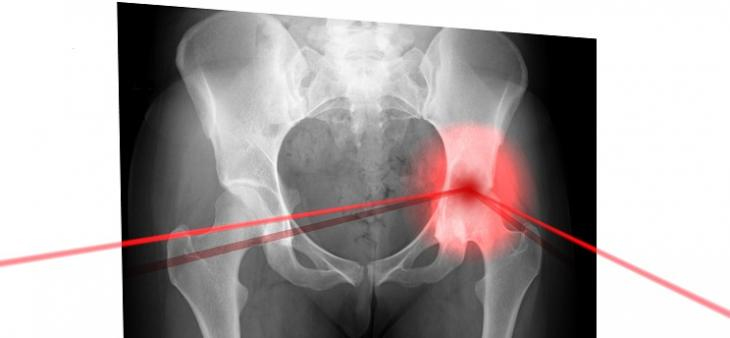Dr Greg Lyubomirsky CEO of Osteoporosis Australia explains the risks associated with bone breakages and a new website to help you.
Q: Tell us first of all, the incidence of bone fractures is high, is it a situation that is becoming more prevalent? Or is it under control?
A: No, it’s definitely not under control. Obviously with an aging population, under diagnosis and under treatment (especially in treating the incident), we anticipate this year there will be more than 165,000 fractures occurring in the community.
Q: Is there a particular age group that you find more prevalent than others?
A: Obviously the older the population, the more fractures are occurring but anyone over the age of 50 really needs to look at the risk factors for osteoporosis and needs to observe their bone health and make sure that they actually talk to their doctor. We here at Osteoporosis Australia have a very good diagnostic tool, which is knowyourbones.org.au
Q: And what will people find on that website Greg?
A: Well, basically it’s an assessment of your risk of osteoporosis, it takes into consideration your history, your current bone health, your risk factors and then it generates a report which can be discussed with your doctor. It’s a pretty good indication of where you’re at with regards to risk for future fractures and/or osteoporosis
Q: How often should people have a density check?
A: Well over the age of 70 you could look at maybe every 2 years and if you continue to see that your bone density is normal you could potentially wait five years after the age of 70. But if you have independent risk factors for osteoporosis you probably need to have it more often. But if you have any of the risk factors and if the bone density is in the range of either really concerning or dangerous then the bone density test should be repeated at least once a year.
Q: Are there things we should simply not do?
A: We do not necessarily consider climbing up a ladder or mountain with the risk of osteoporosis, though among the men there’s a significant risk for falling and killing yourself. But if one has a low bone density and fragility fracture, one needs to a fall so there are good common-sense measures like:
- Doing high intensity weight bearing exercise to keep you balanced, and things to keep your muscle strength up.
- Adequate dairy intake, where you can get adequate amount of calcium
- Some potential arrangement in the house where you can have less chance of falling.
These are common-sense arrangements that one can do in order to avoid falling, and obviously once you have a fracture or once you’re diagnosed with osteoporosis I think we need to understand that calcium and vitamin D is not enough, exercise might not be enough. You need to actually seek a doctor’s opinions and potentially implement something pharmaceutical.
Q: Is osteoporosis more prevalent in men or women?
A: Well, it’s definitely more prevalent in women, certainly after the age of 50. Post-menopausal age women are more prone to osteoporosis because of the loss of oestrogen. Men are certainly not avoiding the issue with osteoporosis and broken bones, but it is less prevalent because it happens at a later stage in men compared to women.
Q: And what about diet? What’s number one in the shopping basket?
A: Well, if we talk about calcium, obviously a dietary intake of milk, yoghurt and cheese are all good. You need to have at least three servings per day. It’s good to start exercise when you’re young and continue through your lifetime. And another factor, is an adequate amount of vitamin D which can be safe exposure to sunlight or taken as a supplement. All very important.
However, I need to stress that even with an appropriate amount of calcium and an appropriate amount of vitamin D and exercise, a lot of people will still develop osteoporosis because there are genetic factors that you can’t change (unless you want to change your parents)!
Obviously, it’s important to understand that osteoporosis is not just about calcium and vitamin D but also about the structure of your bones, it’s about childhood intake of protein and nutrients, and all of these factors play a role. So, it’s very important to assess the risk factors and make sure you actually seek advice from a doctor. This can be done very easily now because we have knowyourbones.org.au – we have solutions now. We have many good solutions that can reduce the risk of fracture between 30 – 70 per cent in people who either don’t have a fracture yet or already have a fracture but it would reduce the consequences of fracture.

